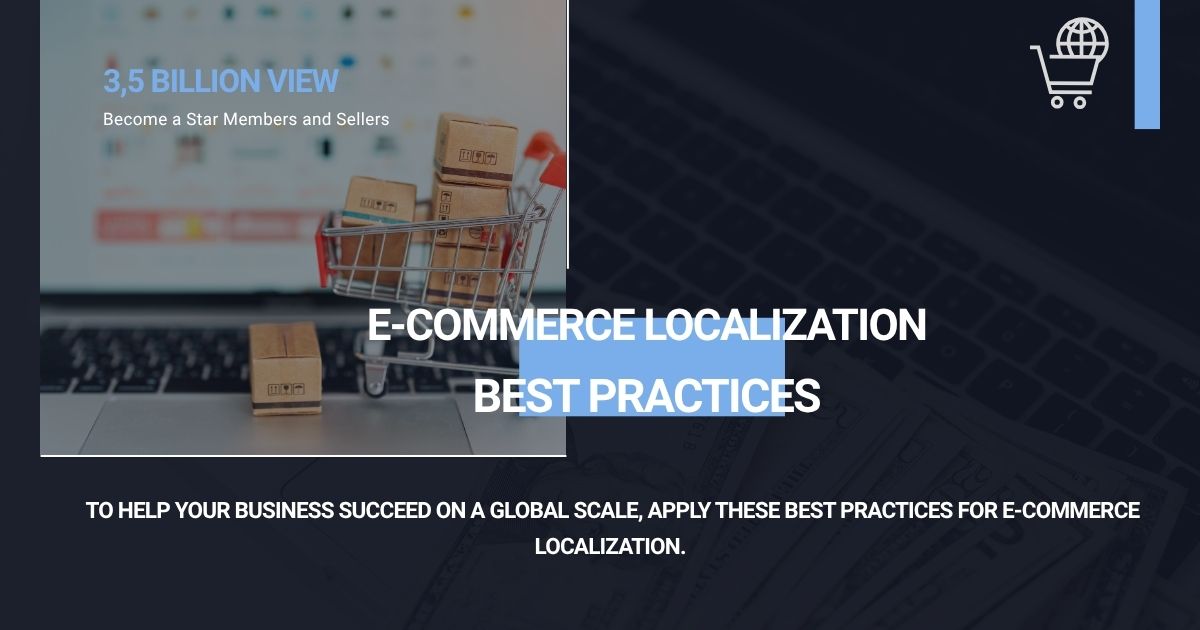
Expanding your e-commerce business in new markets is an exciting opportunity. But success depends more than offering your products or services abroad. This requires linking connections with different target groups, breaking cultural obstacles and providing personal purchasing experiences. Specify the location of e-commerce, the key to standing in a competitive, global market.
E-commerce location goes far ahead of translating your site. This involves involving your user experience to match the target group’s cultural, linguistic and regional priorities. If right, it can increase customers’ satisfaction, commitment and sales significantly.
This guide will run through best practice to make you local e-commerce platforms and ensure that your brand resonates with the public in new markets.
Why E-commerce Localization Matters
Before jumping into the how, let’s explore why localization matters.
Builds Trust and Credibility
Consumers are more likely to trust and buy from brands that speak their language—not just in terms of words, but cultural context too. Localization bridges the gap between your business and your audience, showing them you value their preferences.
- Fact: A CSA Research study found that 76% of online shoppers prefer to purchase products with information in their native language.
Enhances Customer Experience
Localization creates smoother shopping experiences. From website navigation to payment methods, a localized approach eliminates friction that could lead to abandoned carts.
Boosts Conversion Rates
Trust and seamless experiences don’t just win hearts; they drive sales. A better connection with your audience translates into higher conversion rates, loyalty, and lifetime value.
Best Practices for E-commerce Localization
To help your business succeed on a global scale, apply these best practices for e-commerce localization.
1. Translate but Go Beyond Words
Translation is just the tip of the iceberg. While language translation is essential, localization ensures that the tone, style, and context align with the local audience.
- Use professional translators or AI tools like Smartling or Lokalise to ensure accuracy.
- Adapt idioms, slang, and cultural references so they resonate with your target market.
- Localize visuals, symbols, and design elements that may carry different cultural connotations.
2. Localize Payment Methods
Imagine a customer from Germany trying to purchase an item on your site, only to discover their preferred payment method isn’t available. This could force them to abandon their cart.
- Offer locally popular options like PayPal in the USA, Klarna in Germany, or UPI in India.
- Support multiple currencies to help customers avoid dealing with conversions.
3. Adapt Website Content
A “one-size-fits-all” website won’t succeed across borders. Here’s how to adapt your website for global audiences:
- Display prices in local currencies.
- Provide units of measurement that align with the region (e.g., pounds vs. kilograms).
- Feature local holidays and promotions, like Singles’ Day in China or Black Friday in the US.
Pro Tip: Set up country-specific domains or subdomains (e.g., “.ca” for Canada or “.fr” for France) to boost SEO and improve user trust.
4. Ensure Multilingual SEO Optimization
Translating your website isn’t enough to get found online. You need to implement SEO best practices for each market.
- Research localized keywords for each region using tools like Google Keyword Planner or Ahrefs.
- Optimize metadata, headers, and product descriptions in local languages.
- Use hreflang tags to help search engines understand the relationship between multilingual pages.
5. Tailor Your Marketing Campaigns
Your marketing strategy should align with cultural norms and preferences. What works in one country may flop in another.
- Content Marketing: Localize ad copy, blog posts, and email campaigns for each market.
- Social Platforms: Use popular local platforms (e.g., WeChat in China, LINE in Japan).
- Visuals and Tone: Keep visuals and messaging relevant to the cultural context (e.g., avoid controversial symbols or colors).
6. Leverage Local Customer Support
Nothing screams “We value you” like offering customer support in your audience’s native language.
- Utilize chatbots trained in multiple languages for automated customer service.
- If possible, hire native support agents to handle complex queries.
- Offer detailed FAQs for region-specific questions like shipping and returns.
7. Conduct User Testing in Each Market
Localization often requires iterations. Conduct extensive testing to ensure your platform runs smoothly in different markets.
- Focus Groups and Beta Testing can provide valuable cultural insights.
- Review analytics regularly to identify drop-off points and make improvements.
Real-Life Example of E-commerce Localization
ASOS, the British online retailer, is a standout example of successful e-commerce localization. By offering country-specific websites tailored to over 200 markets, ASOS integrates localized payment methods, product descriptions, currencies, and even promotional events.
Their mobile app adapts to user preferences, catering to language and market-specific trends, which has led to increased customer satisfaction and a steady rise in sales.
Understanding the Product Localization Steps
Common Mistakes to Avoid
Even the best brands slip up from time to time. Here’s what to steer clear of when localizing your e-commerce business.
- Using Machine Translation Alone: Automated tools can mistranslate phrases or miss cultural subtleties. Always pair them with human review.
- One-Size-Fits-All Strategy: Assume nothing! Every market behaves differently, which is why testing and adaptation are crucial.
- Ignoring Key Metrics: Regularly evaluate performance, including bounce rates, conversions, and cart abandonment, to detect localization pain points.
Start Localizing Your E-commerce Today
Localization has become inevitable for the success of e-commerce. By going beyond language translation and utilizing cultural and regional preferences, you can create customer experiences that engage in trust, loyalty and commitment.
Need help starting? Tools can make the process more manageable. And remember that while technology is your allies, always incorporated human insight into authentic connections.
When it comes to expanding your business, location is not just a strategy; This is the basis. Now it is time to take the first step towards having a meaningful relationship with global customers.
.
Leave a Reply